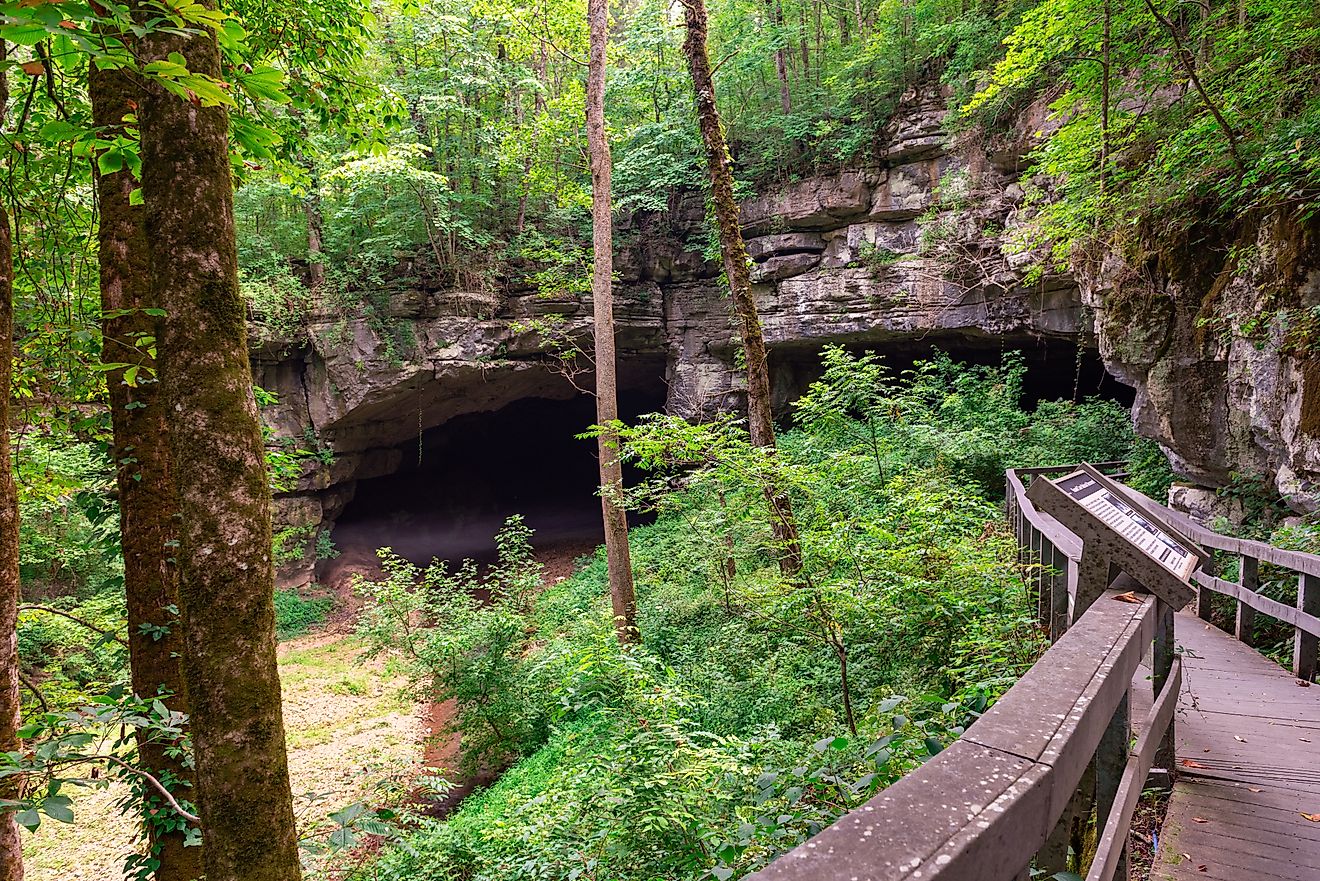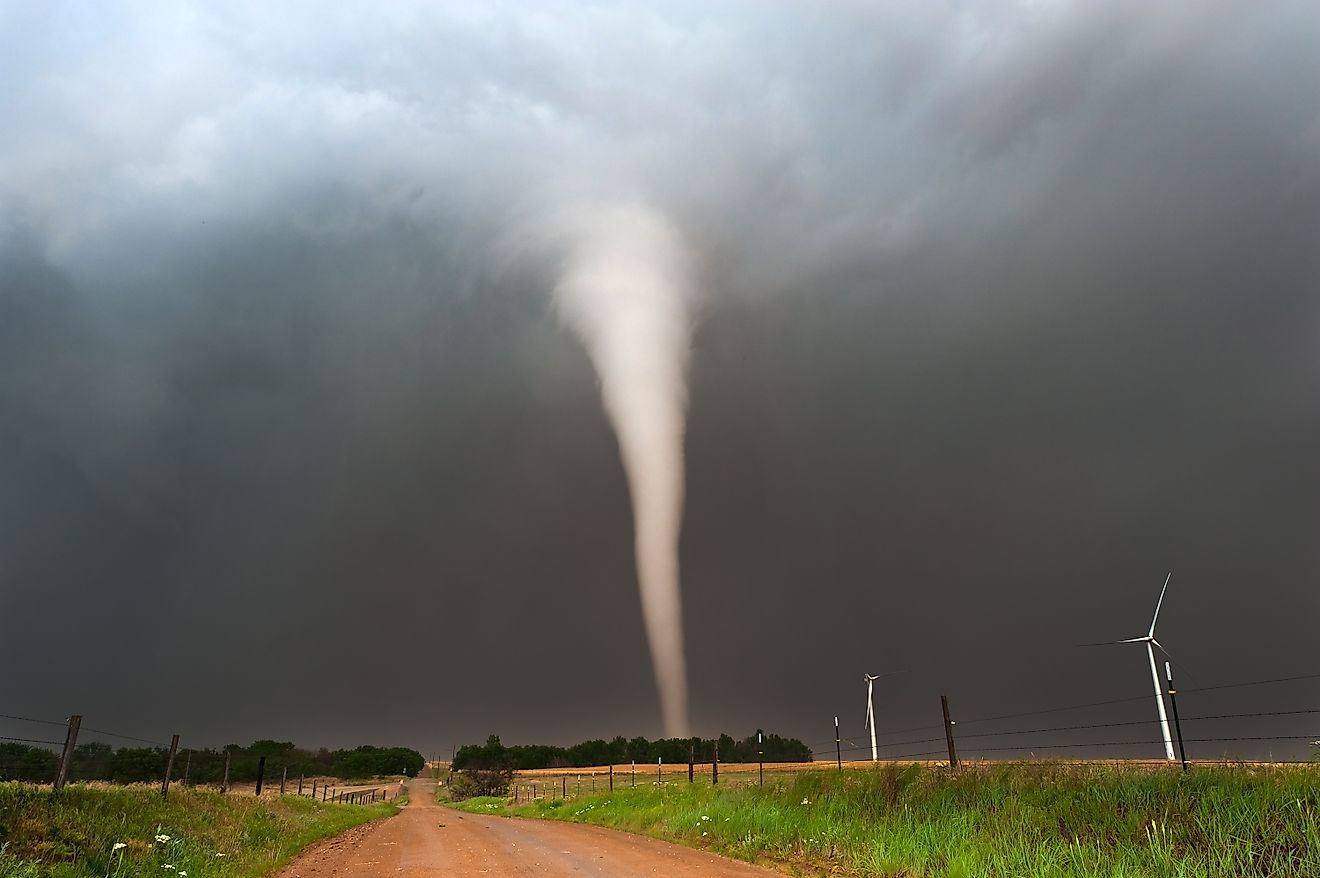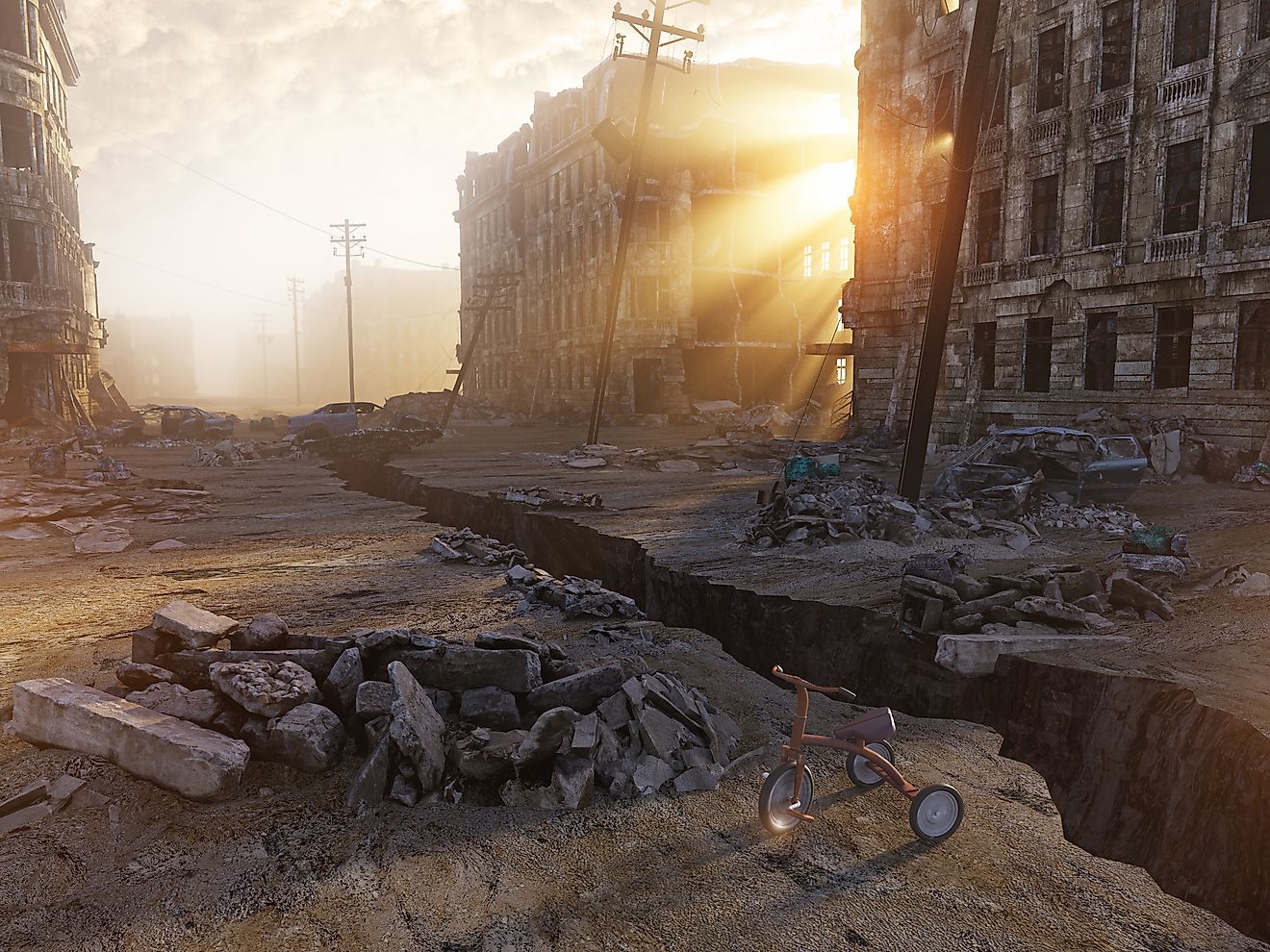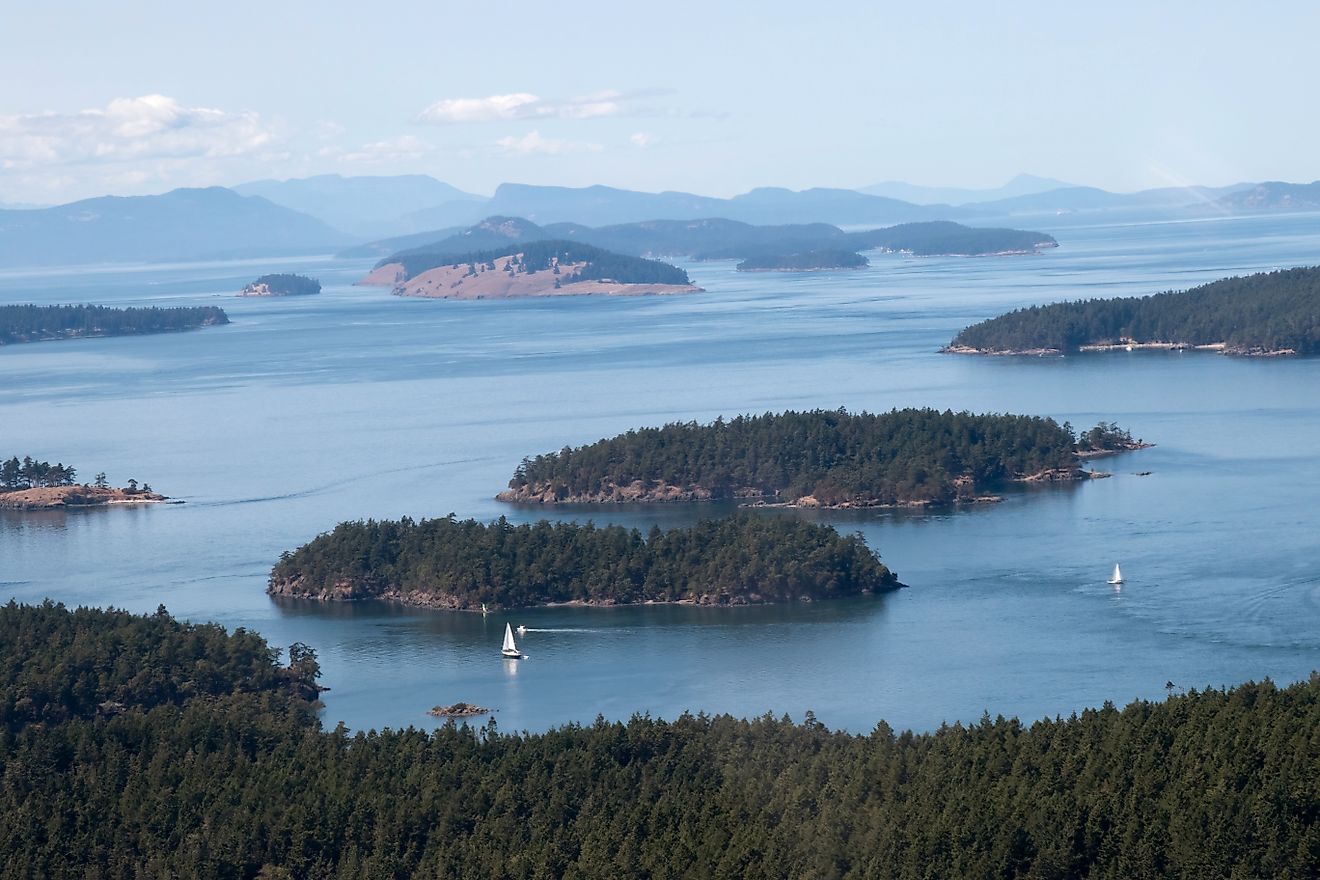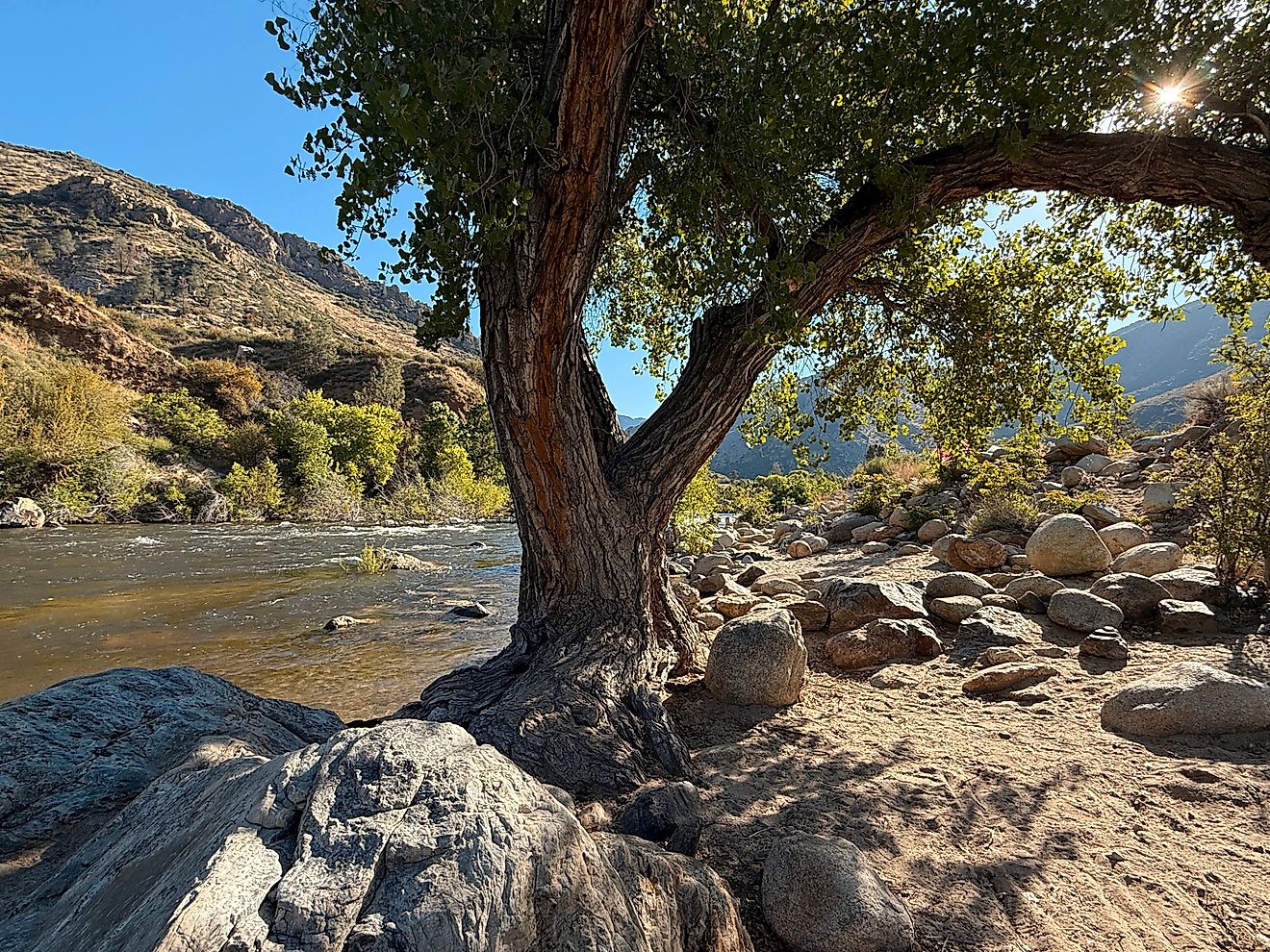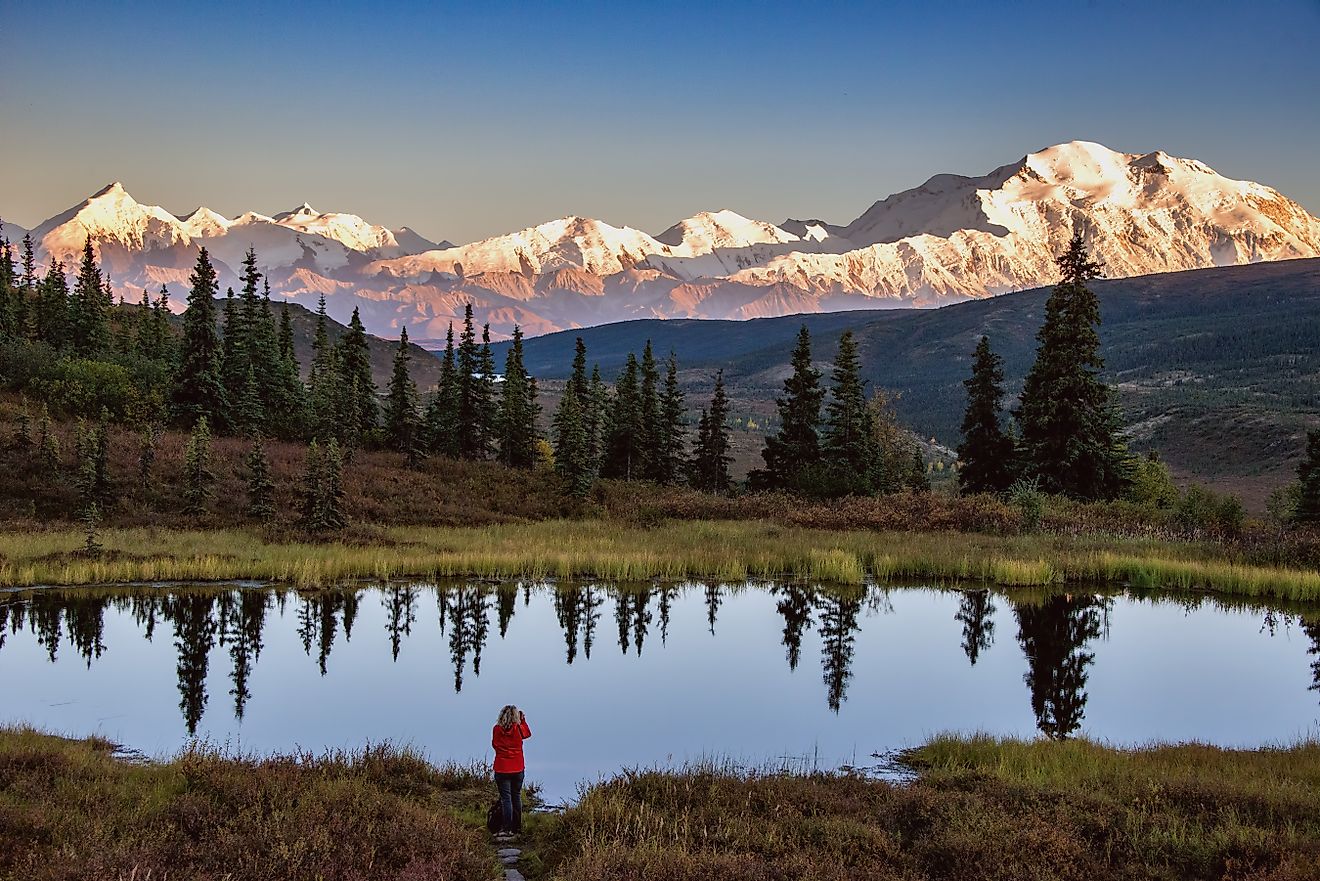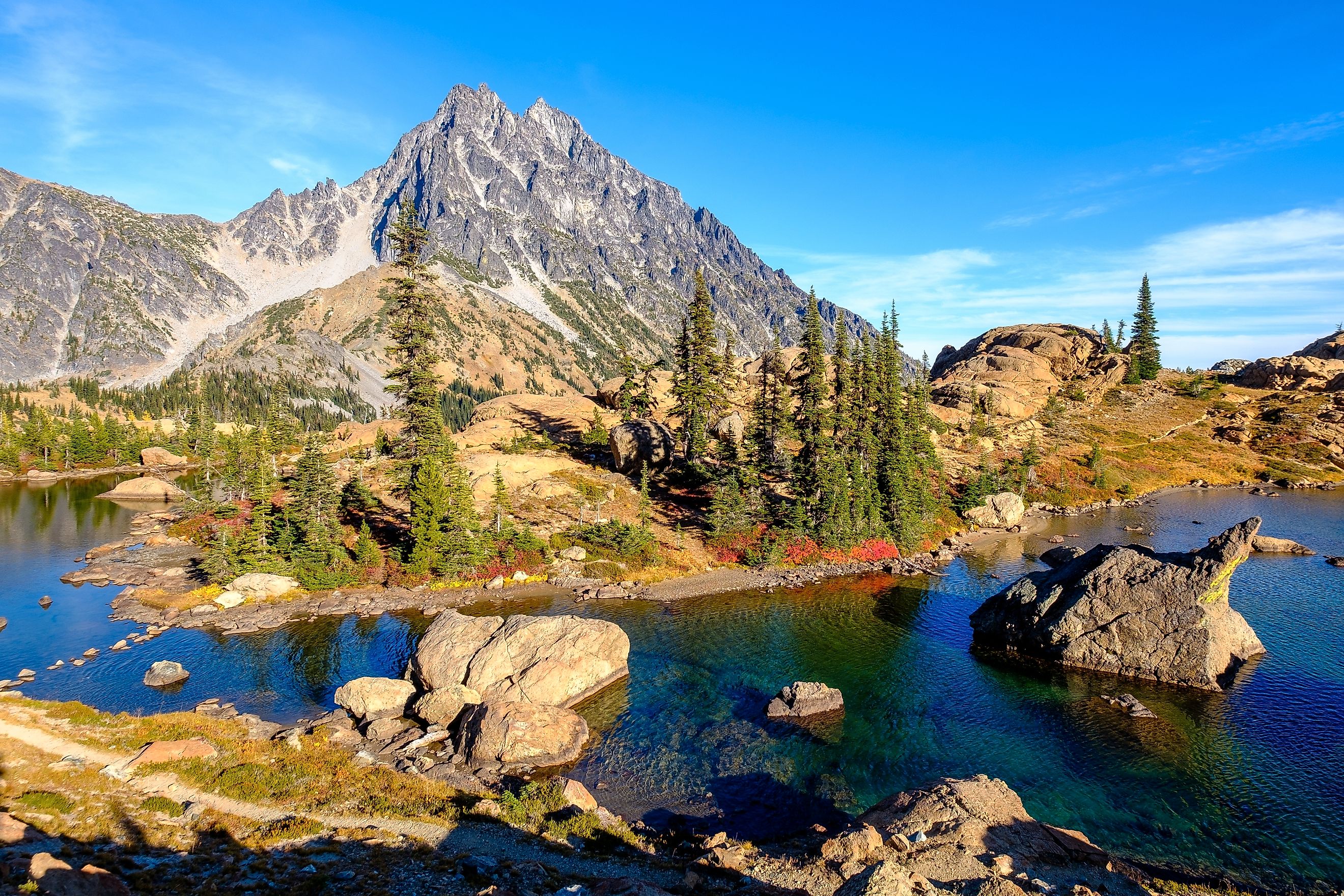
The Most Beautiful Alpine Lakes You’ve Never Heard Of
Not all alpine lakes are famous. While millions flock to Lake Tahoe each year, many equally stunning lakes lie tucked deep in remote wilderness, seen only by a few determined hikers or curious locals. These lakes often sit above the treeline, fed by glaciers or snowfields, with water so clear it reflects the surrounding peaks like a mirror.
Their names rarely show up on national park brochures or Instagram travel lists. Some require long hikes to reach. Others are overshadowed by nearby landmarks. But what they all have in common is raw, untouched beauty. They remain some of the most scenic bodies of water in the country, yet most travelers have never heard of them.
These alpine lakes combine isolation, dramatic landscapes, and high-elevation clarity. They are among the most beautiful in the United States, even if their names have never crossed your path—until now.
The Blue Lakes in Mount Sneffels Wilderness, Colorado
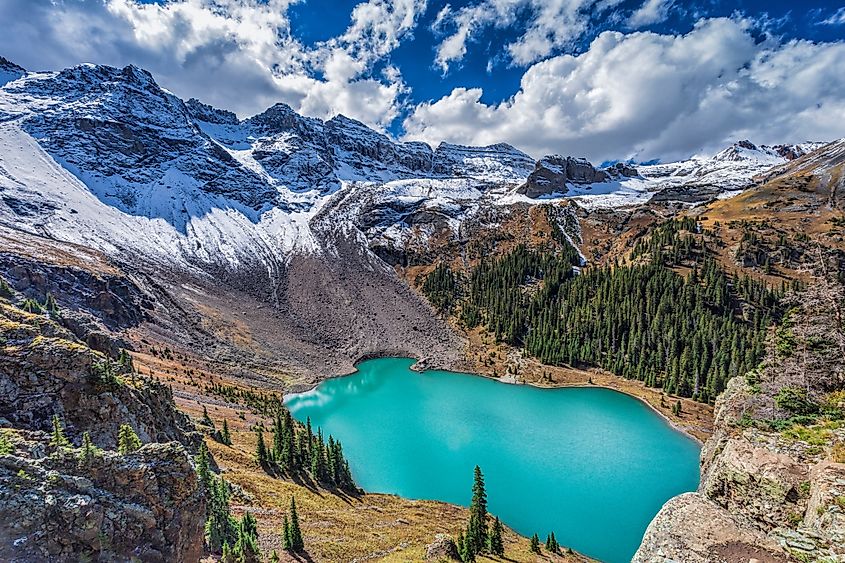
Elevation Range: 9,370 to 12,990 feet
Nearest Town: Ridgway, CO
Just outside Ridgway in the heart of the San Juan Mountains, the Blue Lakes offer one of Colorado’s most stunning high-alpine settings. The trail climbs steadily from 9,370 feet to the vibrant turquoise waters of the Lower Blue Lake at 10,980 feet, a glacial basin surrounded by rugged cliffs and wildflower meadows. Many hikers stop here, but the trail continues to two upper lakes at 11,700 feet, framed by dramatic peaks and snowfields that linger well into summer.
The full hike can stretch to 12 miles round-trip if you include the nearby pass at nearly 13,000 feet, but even a shorter outing to the lower lake is rewarding. Though increasingly popular with local hikers, the Blue Lakes remain far less known than Colorado’s more famous alpine lakes. Their vivid colors, varied terrain, and sweeping views make them a hidden gem worth seeking out in late summer or early fall when the trail is lined with wildflowers or golden aspens.
Lake Ingalls in Alpine Lakes Wilderness, Washington
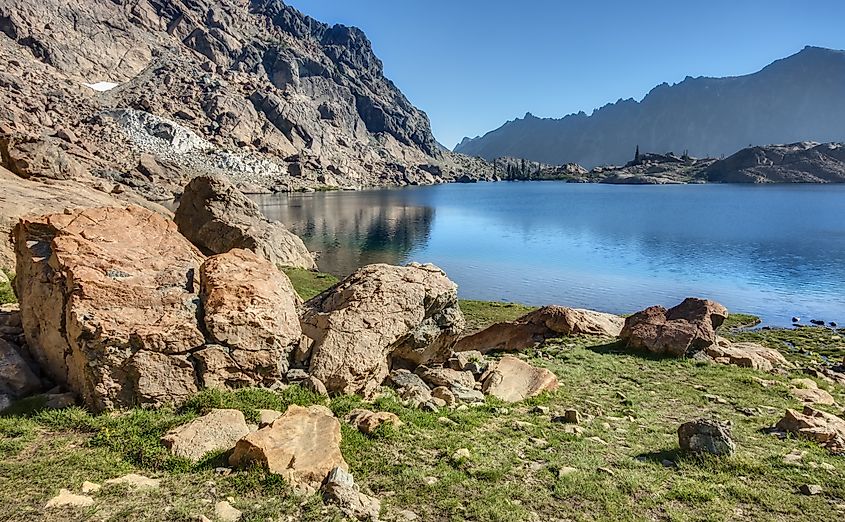
Elevation: 6,500 feet
Nearest Town: Cle Elum, WA
Lake Ingalls is a hidden gem nestled in Washington’s Cascade Range. Reached by a 9-mile round-trip hike through the Alpine Lakes Wilderness, this high-mountain lake offers a front-row view of the jagged, orange-tinted face of Mount Stuart (the second-highest non-volcanic peak in the state).
The trail to Lake Ingalls passes through larch-filled basins that turn golden in the fall, offering a kaleidoscope of color. The lake itself has no outlet stream and sits in a granite bowl, giving it an eerie stillness. Mountain goats often wander the nearby rocks, unbothered by human presence.
It’s a prime destination in late September, when the larches peak and the crowds stay low. Despite being located within a popular wilderness area, Lake Ingalls doesn’t draw the same attention as nearby Snow Lake or Colchuck Lake.
Lake Augusta in Okanogan-Wenatchee National Forest, Washington
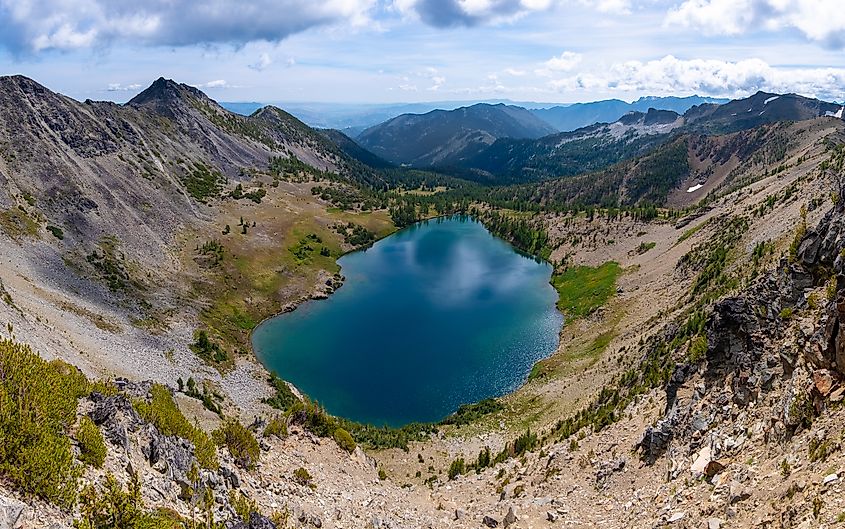
Elevation: 6,857 feet
Nearest Town: Leavenworth, WA
Tucked against the southwest slopes of Big Jim Mountain and just a few miles from the Icicle Ridge Trail, Lake Augusta is a true hidden gem in the Alpine Lakes Wilderness. The trail to Lake Augusta begins at Chatter Creek Trailhead and climbs moderately through dense pine and fir woods. After about 5 miles, the forest opens to reveal a spacious 15-acre alpine basin. The lake’s clear, mirror-like surface reflects the rugged peaks of the Icicle Ridge and Big Jim, making it a favorite among photographers and solitude seekers—yet it remains much less crowded than more popular nearby lakes.
Anglers often target native cutthroat and west slope trout in the lake, and backpackers enjoy camping along its quiet shoreline. Despite its proximity to trail junctions leading to Lake Ida and Lake Sylvester, Lake Augusta receives far fewer visitors. The route requires a self-issued wilderness permit but no reservation hassles or permits, making it ideal for spontaneous trips.
Sky Pond in Rocky Mountain National Park, Colorado
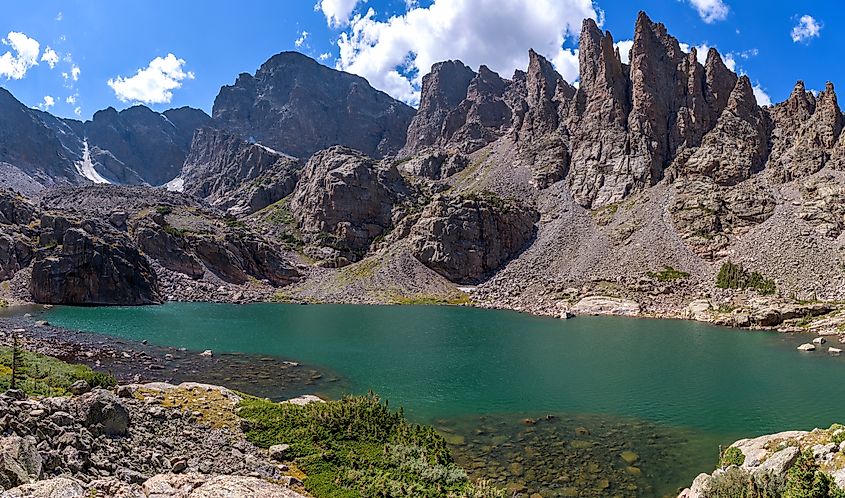
Elevation: 10,900 feet
Nearest Town: Estes Park, CO
Sky Pond sits beneath sheer cliffs in one of the most dramatic cirques in Rocky Mountain National Park. Though not as famous as Dream Lake or Emerald Lake, Sky Pond offers a more rugged, alpine experience for those willing to tackle the 9-mile out-and-back trek.
The trail winds past waterfalls, through forests, and across rock scrambles before revealing a stunning view of the lake backed by the spires of the Sharkstooth and Taylor Peak. In summer, wildflowers dot the meadows, and in autumn, the air gets crisp and thin.
Because of its relative difficulty, Sky Pond avoids the heavy foot traffic of RMNP’s lower lakes. It’s a place for solitude, where silence is broken only by the wind or the occasional clatter of loose rock.
Lake Katherine in Pecos Wilderness, New Mexico
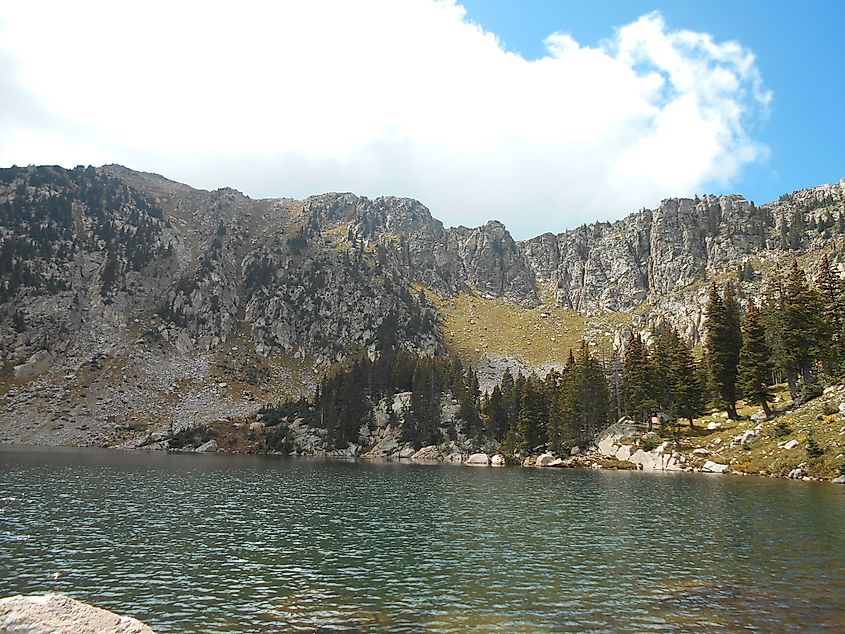
Elevation: 11,745 feet
Nearest Town: Santa Fe, NM
High in the Sangre de Cristo Mountains, Lake Katherine is one of New Mexico’s most breathtaking alpine lakes. Surrounded by jagged ridgelines and alpine tundra, the lake feels more like Colorado or the Cascades than the American Southwest.
Getting there requires commitment. The 13-mile round-trip hike begins at the Santa Fe Ski Basin and climbs through dense forest and subalpine meadows. At the summit, Lake Katherine appears like a sapphire set into a granite crown. Wildflowers bloom in July, and the lake is often ringed by snow well into summer.
It’s a local favorite for backpackers, but few outside the region know it exists. The Pecos Wilderness, with its dramatic elevation and big-sky scenery, is one of the least explored mountain ranges in the country.
Lake of the Crags in Grand Teton National Park, Wyoming
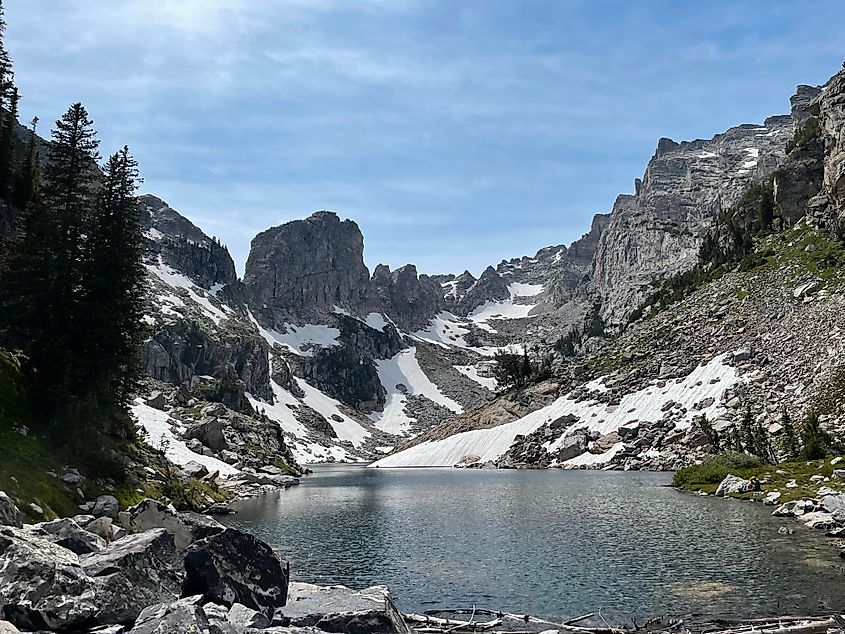
Elevation: 9,500 feet
Nearest Town: Moose, WY
Lake of the Crags sits high above Jenny Lake in Grand Teton National Park, but very few visitors ever reach it. There’s no maintained trail to this remote lake. Instead, hikers follow a faint climbers’ path through Hanging Canyon, requiring route-finding and scrambling.
The reward is a perfect alpine lake framed by granite walls and towering peaks, including Mount St. John and Symmetry Spire. The lake is fed by snowfields and often remains icy into July. Pines cling to the rocks and the wind carries echoes from the surrounding cliffs.
Because of its remoteness and technical approach, Lake of the Crags is often empty, even in peak season. It’s a dream destination for serious hikers looking to escape the crowds below.
What is an Alpine Lake?
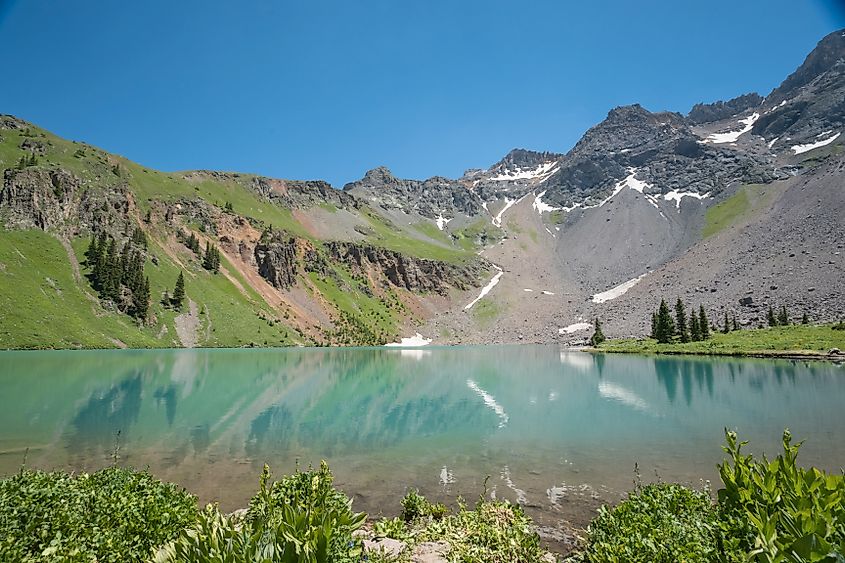
Alpine lakes are typically located above treeline, which in the United States can range from 9,500 to 12,000 feet depending on the region. These lakes are usually:
-
Fed by snowmelt or glaciers
-
Surrounded by steep mountainous terrain
-
Low in nutrients, with cold, clear water
-
Located in remote or high-elevation areas
Their beauty comes not only from the scenery but also from the isolation. Alpine lakes are often only accessible by long hikes, which helps preserve their natural condition and limits overuse.
Why These Lakes Remain Hidden
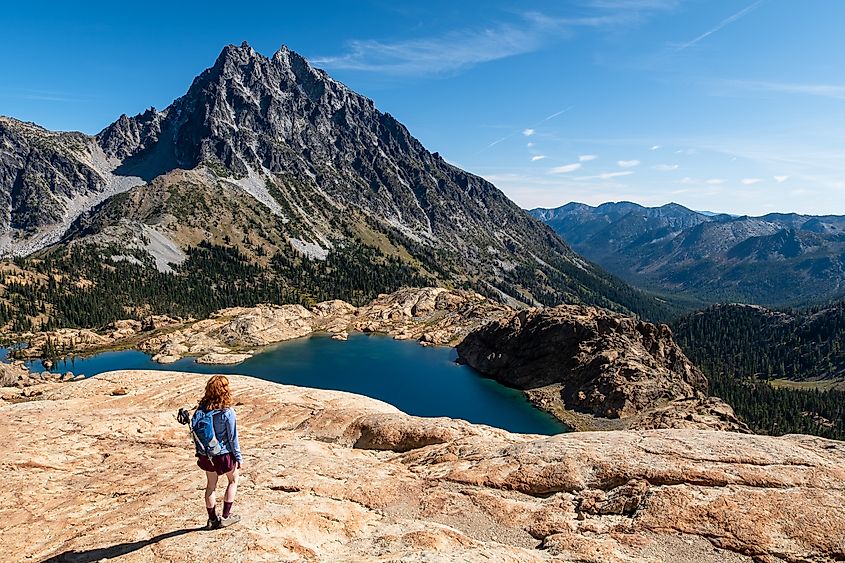
Many of the alpine lakes on this list remain relatively unknown for several reasons:
-
Remote Access: Some require lengthy hikes or backcountry permits.
-
No Roads or Trailheads Nearby: A few lack direct access roads, making them inaccessible to casual visitors.
-
Overshadowed by Famous Neighbors: Lakes like Sky Pond or Lake of the Crags sit in parks dominated by more famous lakes.
-
Lack of Social Media Exposure: Without constant posts on Instagram or TikTok, these lakes remain under the radar.
Ironically, their beauty often rivals or even surpasses more popular spots. For those willing to seek them out, the experience is far more rewarding.
Tips for Visiting Alpine Lakes Responsibly
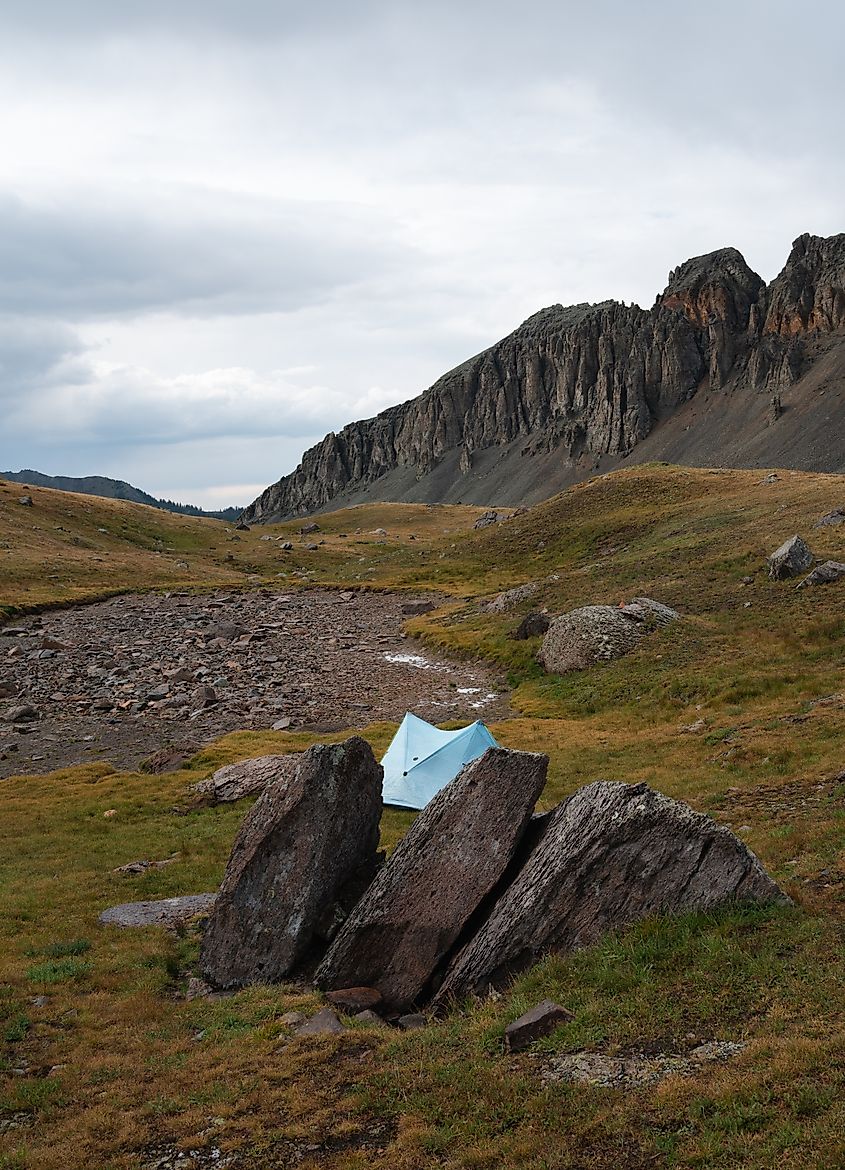
Alpine environments are fragile and easily damaged by human activity. If you plan to visit any of these lakes, keep the following in mind:
-
Pack out all trash and leave no trace.
-
Avoid trampling vegetation, especially near the shoreline.
-
Stay on established trails when possible.
-
Camp at least 200 feet from water if backpacking.
-
Respect wildlife and keep food secured.
Preserving these places ensures they remain pristine for generations to come.
Final Thoughts: Beauty Beyond the Beaten Path
Alpine lakes are nature’s quiet sanctuaries. While many visitors crowd into the most photographed ones, true beauty often lies in the lesser-known places. From New Mexico’s hidden peaks to Montana’s wilderness basins, these under-the-radar lakes offer the kind of solitude that transforms a hike into a memory.
In a world where it feels like everything has already been seen, these lakes prove there is still magic left to find. All it takes is a map, some stamina, and the desire to go just a little farther than the rest.
Q&A
What is considered an alpine lake?
An alpine lake is typically found above the treeline in mountainous regions, often fed by snowmelt or glaciers and surrounded by rugged terrain.
When is the best time to visit alpine lakes?
Late summer (July through September) is ideal for most alpine lakes. Snow has usually melted, wildflowers are in bloom, and weather is most stable.
Do you need a permit to visit these lakes?
Some lakes, especially in national parks or wilderness areas, may require day-use or backcountry permits. Check with local forest services or park websites.
Can you swim in alpine lakes?
Yes, but the water is extremely cold, even in summer. Short dips are common, but prolonged swimming is not recommended due to hypothermia risk.
Are dogs allowed at alpine lakes?
It depends. Many national forests allow leashed dogs, but national parks may prohibit them. Always check regulations before bringing pets.
